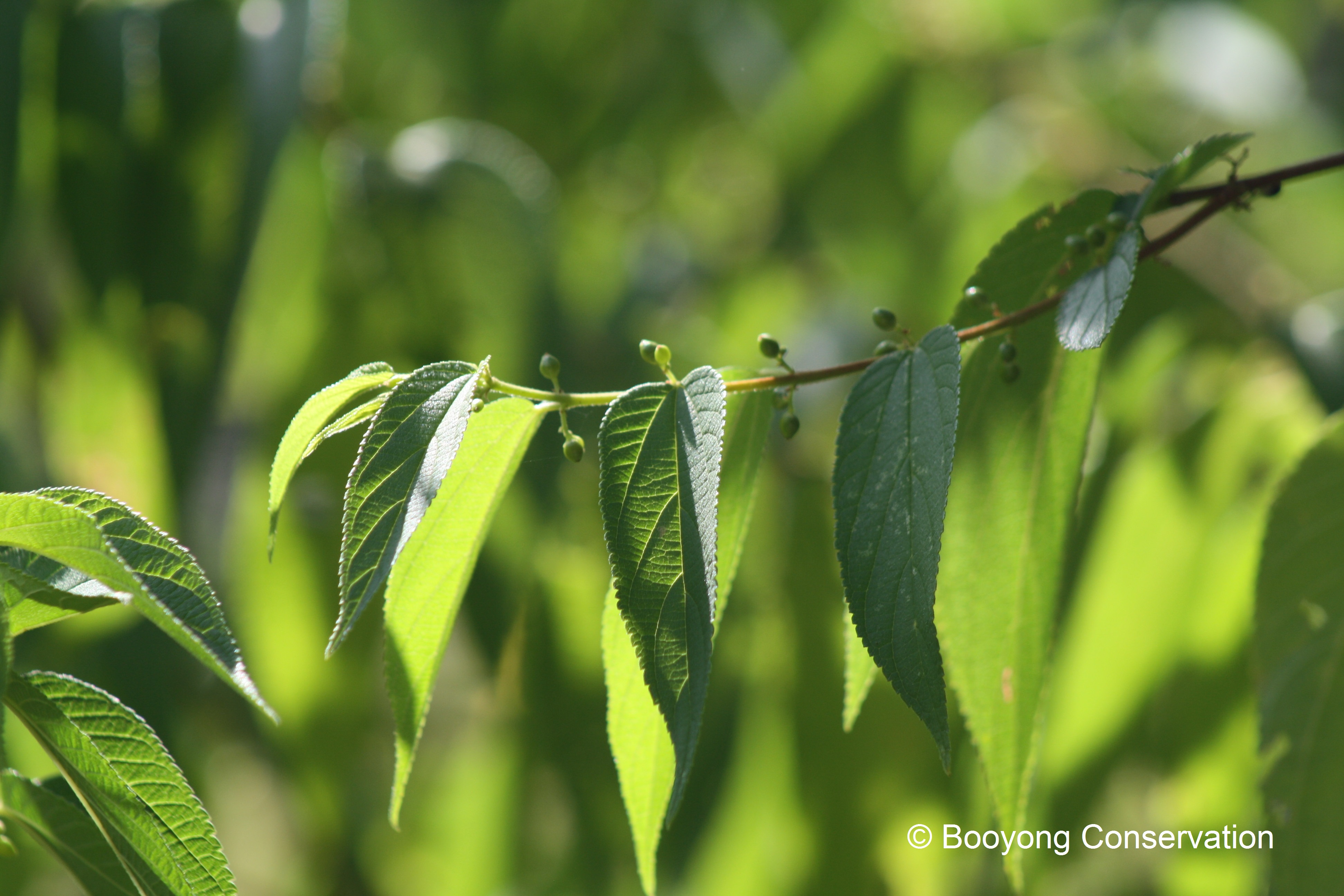 In front of the cabin at Booyong we have a native called ‘poison peach’, otherwise known as a Trema tomentosa. It is a widespread shrub that grows to 4 metres high and produces small black fruit which are usually accompanied by tiny green flowers. It has little value as a decorative plant but is considerably useful otherwise, especially considering its ability to attract birds to its fruit, who are immune to its poison. We keep it in the cabin garden due to this ecological value.
In front of the cabin at Booyong we have a native called ‘poison peach’, otherwise known as a Trema tomentosa. It is a widespread shrub that grows to 4 metres high and produces small black fruit which are usually accompanied by tiny green flowers. It has little value as a decorative plant but is considerably useful otherwise, especially considering its ability to attract birds to its fruit, who are immune to its poison. We keep it in the cabin garden due to this ecological value.
The small tree can grow to a total of 3m, with toothed oval-shaped leaves of 9-3 cm in length. The flowers are miniscule, pale green in colour, and are usually found amongst the leaves. Planting these poison peaches requires little consideration regarding its position, though well-drained soil is highly recommended, and it is usually propagated from fresh seed or cuttings.
The evergreen peach plant produces fruit from February to May and continues to display flowers and leaves all year. They are commonly found in coastal areas or moist places, favouring environments that are sub-tropical or of the rainforest variety.
The poison peach earns its ominous name from its poisonous properties that are especially toxic to sheep, cattle and horses. The effects of the plant are severe and deadly (loss of appetite, shivering, staggering, Gastro, excitement and struggling, coma and death) with no proven cure having been invented, so it is important to protect any animals from the plant if necessary. Luckily it is not usually eaten unless the conditions are dry.

You must be logged in to post a comment.